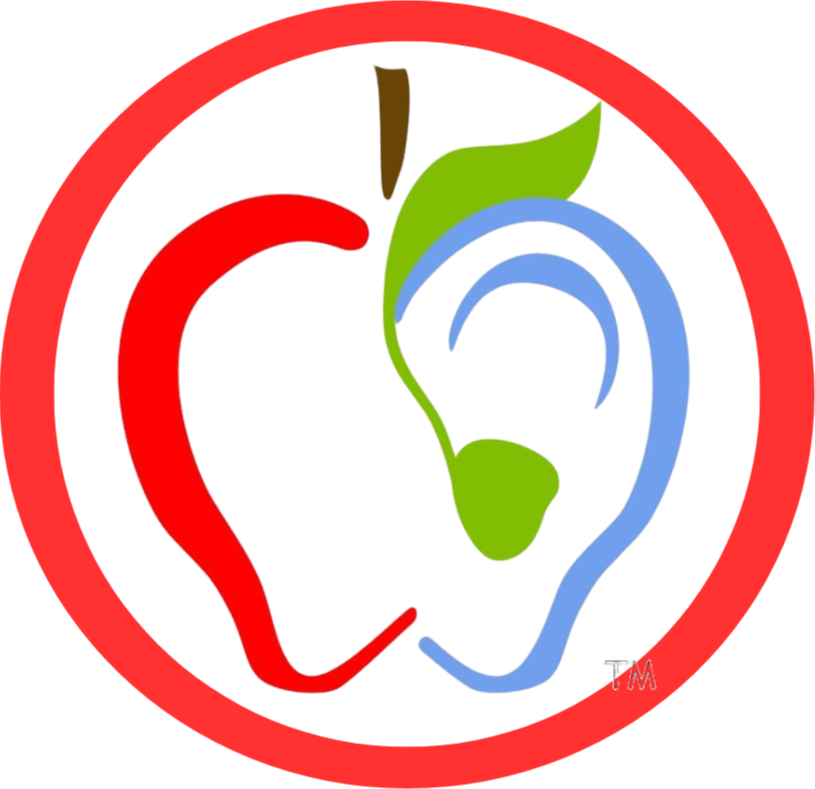What About a Classroom Interpreter?
Aug 25, 2021
The school year is rapidly approaching and I am working to make sure my students with hearing loss are established in an environment that will support them and give them the opportunity to thrive.
I am reminded that students with hearing loss who need sign language to fully access their classroom may not actually thrive in a classroom with an interpreter. In fact, this environment may actually hold them back.
The key is LANGUAGE. Do they ALREADY have enough LANGUAGE to be able to benefit from a sign language interpreter?
Children cannot effectively learn sign and develop language by watching an interpreter. They must have the language first.
If they do not, putting them in this environment may actually impede their learning and have lifelong negative effects.
I recently posted about this in my Facebook group Professionals Working with Deaf and Hard of Hearing Students and Parents ACCESSing the Way for Their Deaf or Hard of Hearing Child and the response was overwhelming.
Many people were surprised by my comment. Why not? Why can’t kids learn sign language through watching an interpreter? What if there is no DHH classroom or anyone else who signs?
Many other people agreed with me but expressed concern because of the limited options available to their child (or student) within their school.
HERE’S THE THING.......
Optimally, language is learned through natural exchanges such as a give-and-take conversation directly through a conversation partner.
This is not the dynamic that occurs when there is a sign language interpreter interpreting for teacher. Instead of a natural give-and-take natural exchange, the dialog becomes linear discourse, meaning only one person is speaking. There tends to be a set path for interpreting and does not engage the receiver in a natural way. Basically, someone is talking at you - there is limited opportunity for the conversation to fluctuate based on your linguistic needs. If you already understand the language that is being presented, this can work for you. However, if you don’t - the language will essentially get lost and will have no meaning.
A common misconception for deaf or hard of hearing children is that if you put them in the classroom with an interpreter, that, just by watching the interpreter, they will learn to sign. For us, this would be like watching TV in Chinese and hoping to learn the language without ever engaging in it or being formally taught it.
Before a student can truly benefit from an interpreter, a number of foundations need to be in place.
Let’s start with LANGUAGE.
Sign Language Competencies Required to Access the General Education Classroom:
- The ability to participate in basic give-and-take conversation in a variety of settings.
- The ability to understand and respond appropriately to questions.
- The ability to "oversee" conversations and dialogue in sign language and tell you what was said.
- The ability to understand references to something that happened in the past or will happen in the future.
- A strong vocabulary bank of words phrases that they can use spontaneously and understand receptively.
If a child/student has the language foundation to access the language presented in the general education classroom, which requires these competencies above to fully access the curriculum, then there are a few other things to consider.
Interpreter Readiness Skills:
- Does the student have the ability to maintain eye contact with an interpreter for an extended amount of time?
- Does the student have the confidence/ability to express when he/she doesn’t understand the content being interpreted?
- Does the student understand the process of interpreting - meaning that the interpreter is a 3rd party communicator and that there are other people “actually” delivering the message?
Once these competencies have been addressed, the IEP team will have a better picture of whether or not the student is ready to have an interpreter in the general education classroom. It is important to note that not all students are ready to utilize an interpreter within their academic environment.
If a student does not yet have the foundational competencies required to benefit from an interpreter, either because of their limited language foundation or their abilities to understand the role of the interpreter and how to benefit from one, the IEP team should set up programming to support the student in developing these foundations. Ideally, this would be in an environment where they can communicate directly with peers and teachers - in sign language. Direct instruction and conversation should be available in sign language to help develop the communication abilities described above. This environment most likely is a classroom specifically for students who are deaf and hard of hearing.

However, in my years of connecting with families and teachers through The Online Itinerant, I recognize there isn’t always a classroom environment and peers as an option. When this is the case, the IEP team must address, what do we do now?
When there are no other placement options that can provide peers and staff for ongoing language immersion, then I urge school districts to set up an opportunity for a student to have time outside of the classroom where they can engage in natural give-and-take dialog with someone fluent in sign to develop these skills. This will require time outside of instruction where a student can read books, participate in hands-on activities that build language, and have access to other people signing. Some creative “out of the box” ways to provide this environment include:
- Language development through a deaf role model
- Time 1:1 with the sign language interpreter and/or the DHH teacher, outside of the classroom, where conversation and language exchanges can happen through sign only
- Time with 2 other signers where the student can “oversee” conversation and have access to incidental language
I know what you are thinking....
"When do we have time to do this? The schedule is packed full of academics and we have no time to spare!"
While I understand the truth of these words (I really do!), you must remember that a student without a strong language base will never be able to catch up on academics, no matter how much you talk (or interpreter) at them.
They must have engaged time to have natural conversation and learn from meaningful activities to develop their language foundation to meet the language competencies above or they will not be able to learn the academics.

Ideally, these opportunities would happen daily and as much as possible. I do want to emphasize that placement within a program that offers other deaf or hard of hearing peers and a staff who sign is the most recommended placement for a student who needs to develop their sign language foundation. The more ongoing immersion that can happen early on, the more quickly the student can build the language foundations needed to benefit from a sign language interpreter inside the general education classroom.
I know the other question you are asking.....
"What about students who are hard of hearing and can listen and speak??"
Many hard of hearing students today have a strong foundation in listening and spoken language but do not have clear access within the classroom.
This situation arises frequently, and as my time as an Education Specialist for Students who Are Deaf or Hard of Hearing for the Outreach Program in the state of Wisconsin, I often saw the result of a school providing a sign language interpreter to a student who did not use sign as their primary language, to “give them access” to what they couldn’t hear in the classroom.
Even though these schools were very well-intending in providing sign language services early on, I saw it every time….. A few years later the school would be asking if the student really benefited from the interpreter as they never watched the interpreter and the student themself had never learned to sign. The school then tried to figure out the best way to support a student who still did not have full auditory access to the curriculum, however did not benefit from an interpreter.
In order for a hard of hearing student to benefit from an interpreter, they need to become fluent in sign language, at least receptively. How do you help a hard of hearing student become fluent in sign language? The same way you teach the others - through give and take natural language exchanges. You need the same opportunities as above to build their foundational sign language skills. The good news is it will happen much more quickly for a student who already has a strong language foundation in listening and spoken language.
My student appears to have the skills needed to benefit from an interpreter! Now what?
If a student shows the competencies required to successfully use an interpreter, then it is important that they receive some training ahead of time to prepare them and help maximize the interpreting process.
Skills Students Need to be Trained On:
- Ensure the student understands the roles and responsibilities of each person in the classroom - the teachers, the interpreter, and them.
- Establish how the interpreter will communicate who is speaking and where they will stand in relation to the speaker.
- Establish how the student is expected to engage with the interpreter (eye contact, head nod, volunteering when appropriate, etc) so they can become active listeners in the learning process.
- Ensure the student knows how to communicate that they are not understanding the message and they are comfortable doing so. This is a very important self-advocacy skill that students are often not taught.
Many times this instruction is missed and an interpreter is plopped into the classroom and the student has had no training on how this process works. This can be confusing to the student.
Bottom line: For a student to benefit from a Sign Language interpreter, they need to know sign language and have basic foundational skills required to access the language and access the interpreter. It is unlikely that a student will learn sign language strictly by having visual access to one in the academic environment. There needs to be time built into the schedule where a student can learn the language by actively engaging in give-and-take conversational exchanges. They also need to be taught the difference in roles between the teacher and the interpreter, and what their own responsibilities are in the learning process.
When you have been able to establish all the foundational building blocks for your student, they are now set up for success for having an interpreter within the classroom.
A number of years ago, I came across an article in the Odyssey that has articulated well what I have seen for over 25 years in Deaf Education when it comes to students who may (or may not) benefit from an interpreter in the classroom. As an added resource for you, download the full article HERE.
Are you a professional who would like resources, support and community from others in the field? Check out the Professional Academy HERE.
Are you a parent who would like support along the journey of raising a child with hearing loss? Learn about the FRIEND Academy HERE.

